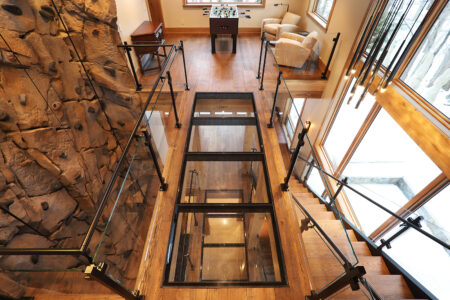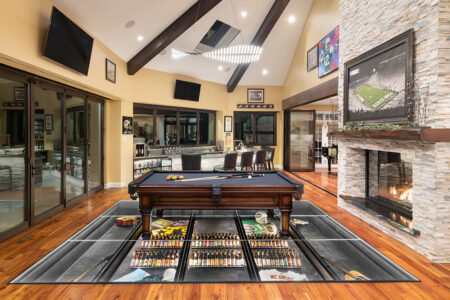
When it comes to building with glass, the materials you choose can make or break a project. From durability and safety to clarity and load performance, quality glass is critical to delivering results that meet both client expectations and code requirements. Whether you’re designing a feature staircase, installing a glass floor, or overseeing a large-scale build, knowing how to source the right materials sets you up for long-term success.
Understanding Glass Terms: Low-Iron, Tempered, Laminated

Not all glass is created equal. The types of glass used in architectural applications vary widely in strength, clarity, and use case. At Glass Flooring Systems, all our glass products are manufactured with low-iron triple-laminated tempered glass.
Tempered glass is a type of safety glass that is created through a process where the glass is heated to extremely high temperatures and then rapidly cooled down, which increases its strength. Laminated glass consists of two or more layers of glass bonded together with interlayers. All our panels are fabricated using three layers of low-iron, tempered glass with structural PVB, Saflex® DG, or SentryGlas interlayers. Our triple-laminated tempered glass assemblies are engineered for passive redundancy ensuring strength and safety with panels that meet ASTM standards.
Prioritize Structural Certification and Performance
Contractors should always verify that the glass materials they source are certified for structural applications. At Glass Flooring Systems, these certifications aren’t just paperwork—they protect you and your client from liability and ensure long-term performance, especially in high-impact designs like glass stairs or elevated walkways. While others offer similar products, we offer the safest solution.
Work With a Proven Supplier, Not Just a Vendor

Finding a reliable glass provider means partnering with a company that understands your project goals, not just one that offers materials. Look for suppliers with a track record of success, deep product knowledge, and a willingness to collaborate. A strong relationship can streamline everything from material selection to delivery, helping you stay on schedule and budget.
Balance Aesthetic Vision With Technical Demands
A sleek, modern look is often what drives clients to choose architectural glass, but visual goals must be balanced with technical needs. Glass flooring, for instance, requires precision engineering and specialty hardware. Choosing a supplier who understands both the design and structural sides of glass ensures that your finished product doesn’t just look great—it performs under pressure.

Sourcing quality glass isn’t just about getting materials delivered—it’s about securing peace of mind for your project. From understanding the right types of glass to partnering with trusted suppliers, contractors who prioritize performance, durability, and design excellence are positioned to deliver superior results, every time.
.png)




